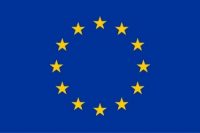Abstract
Deformation zones may localize seismicity not only at upper crustal levels along brittle faults, but also at greater depth along ductile shear zones. The latter is at odds to classic rheological models predicting shear zones to creep and behave aseismically. Cycles of frictional and viscous deformation and brittle precursors to ductile deformation have been proposed as possible explanation. The “SLIP” action will contribute to better constrain seismic localization at mid-crustal depths along ductile shear zones by studying key areas of the Northern Apennines of Italy (NA). SLIP relies on the hypothesis that exhumed brittle-ductile shear zones of the inner NA represent the fossil analogue of the still seismically active deformation zones in the central and external portions of the orogen. SLIP will investigate microstructures in a multidisciplinary action to derive constraints upon the seismic deformation mechanisms steering the orogen seismic activity. The objectives of this proposal are to: 1) Unravel the pressure-temperature-time-deformation histories of exhumed fossil shear zones; 2) Define the role of fluids in triggering metamorphic reactions, enhancing deformation and steering the transient rheology of the shear zones; 3) Determine the provenance of the metamorphic fluids; 4) Reconstruct the tectonic evolution and the conceptual seismotectonic model of the NA. To achieve the above defined specific objectives, a multidisciplinary approach has been designed including fieldwork, optical and scanning electron microscope analyses, Raman spectroscopy, electron probe micro-analyser, laser ablation mass spectrometry, thermodynamic modelling, and age dating of deformation fabrics. SLIP will contribute to our understanding of shallow to mid-crustal earthquakes and its results will remarkably assist in better interpreting current seismic patterns and crustal behaviours. It will also shed new light on the fluid pathways and fluid-rock interaction processes in the crust.
Project details
Unibo Team Leader: Giulio Viola
Unibo involved Department/s:
Dipartimento di Scienze Biologiche, Geologiche e Ambientali
Coordinator:
ALMA MATER STUDIORUM - Università di Bologna(Italy)
Total Eu Contribution: Euro (EUR) 183.473,28
Project Duration in months: 24
Start Date:
03/06/2019
End Date:
02/06/2021


